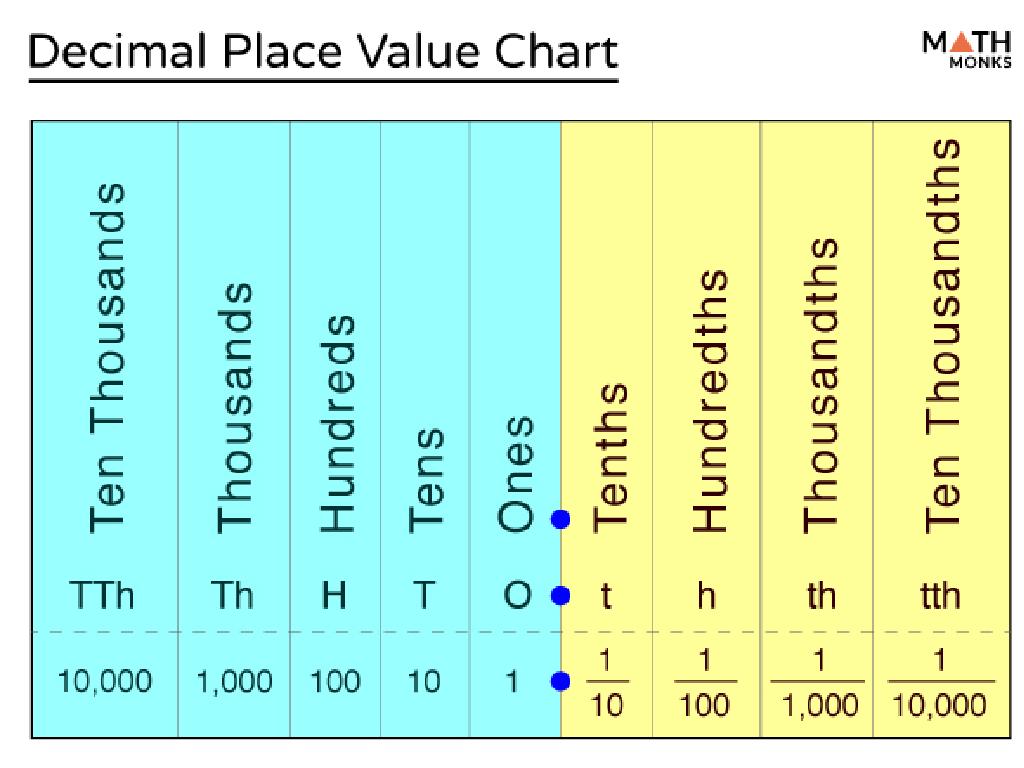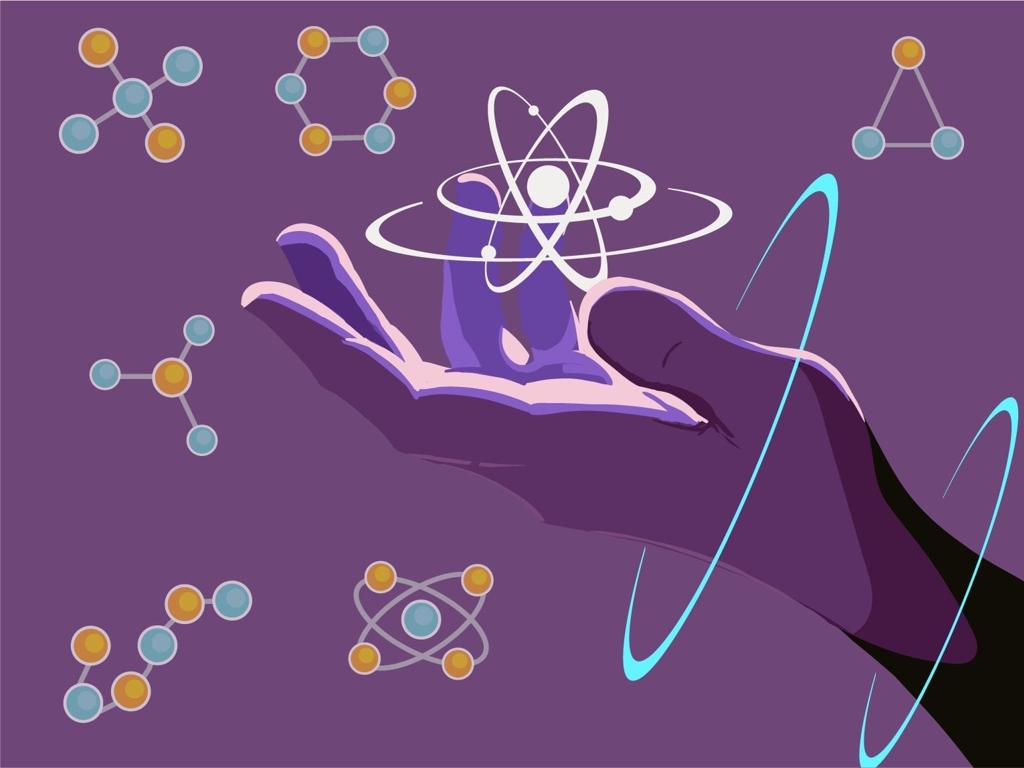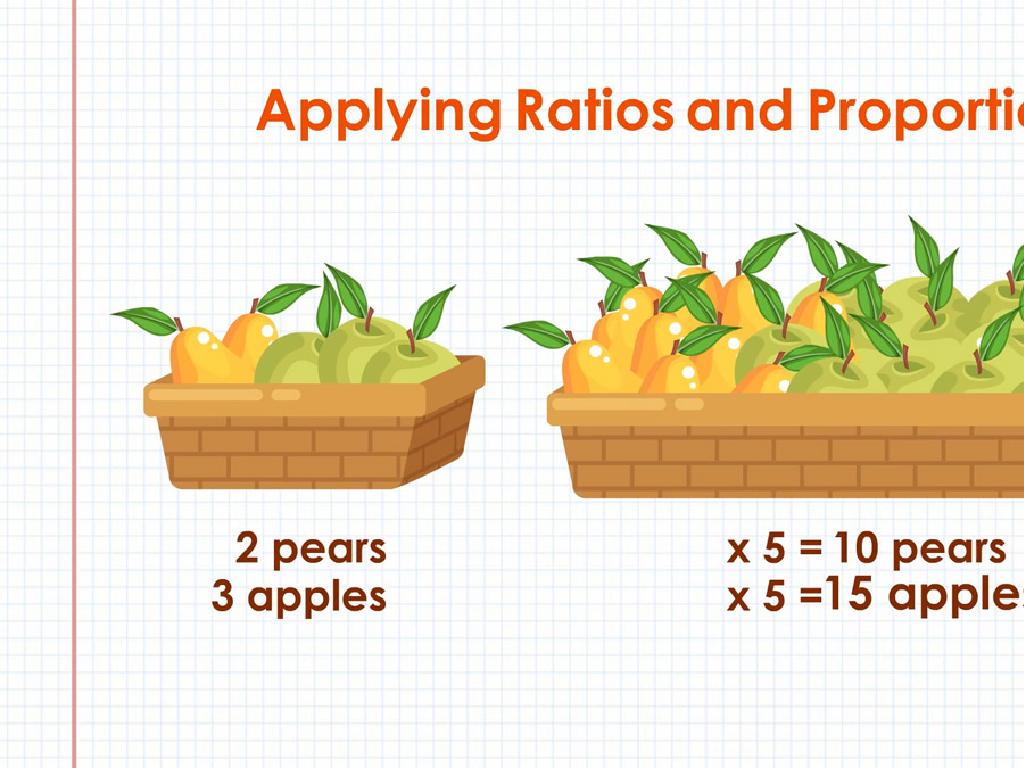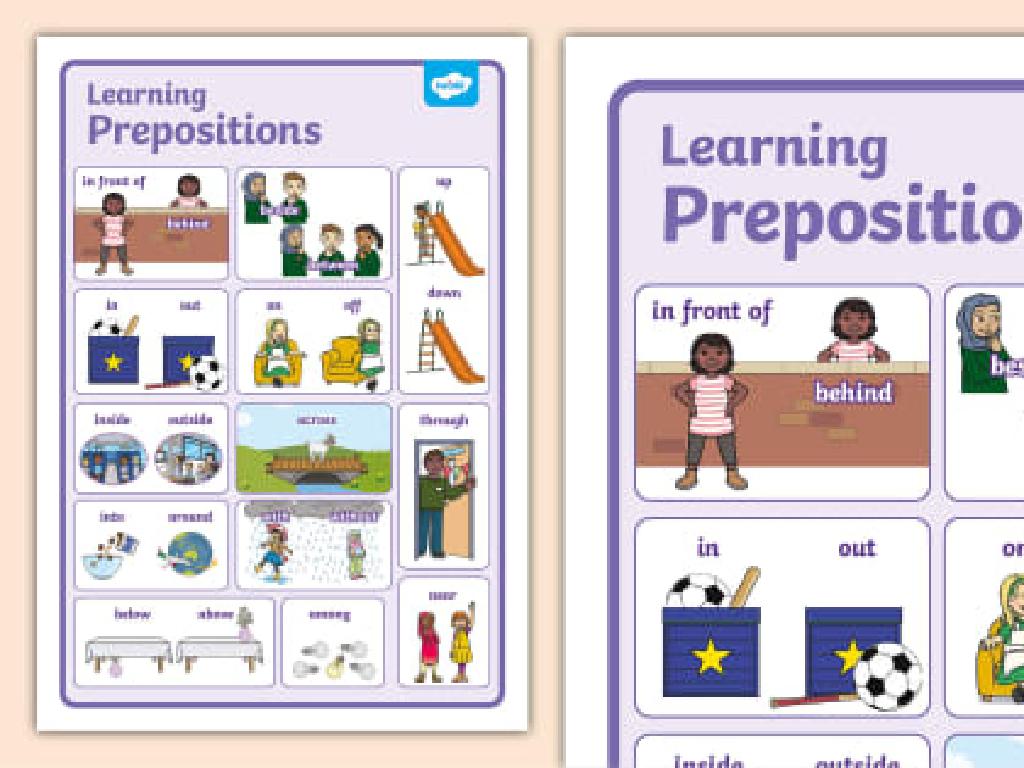How Does Matter Move In Food Chains?
Subject: Science
Grade: Fifth grade
Topic: Ecosystems
Please LOG IN to download the presentation. Access is available to registered users only.
View More Content
Welcome to Ecosystems: Matter in Food Chains
– Explore our natural world
– Define an ecosystem
– A community of living things interacting with their environment
– Matter’s journey in food chains
– Matter cycles through food chains from plants to predators
– Preview: Matter movement
|
This slide introduces students to the concept of ecosystems and sets the stage for understanding how matter moves within food chains. Begin by discussing the various components that make up our natural world and how they interact. Define an ecosystem as a community of living organisms in conjunction with the nonliving components of their environment, interacting as a system. Highlight that matter, which makes up all living things, moves through the ecosystem via food chains, starting with plants and moving up to the largest predators. Use this opportunity to pique students’ curiosity about how energy and matter flow in nature, preparing them for a more detailed look at food chains and the movement of matter in subsequent lessons.
What is Matter in Food Chains?
– Everything is made of matter
– Matter consists of atoms
– Atoms are tiny particles that make up all things
– Matter has 3 states: Solid, Liquid, Gas
– Solids have fixed shape; liquids flow; gases fill their container
– Matter’s role in food chains
– Matter moves through food chains from one organism to another
|
Begin the lesson by explaining that everything around us is made of matter, including the food we eat and the air we breathe. Matter is composed of incredibly small particles called atoms. Introduce the three states of matter: solid, liquid, and gas, with examples for each that are relevant to the students’ daily lives. Then, connect the concept of matter to food chains, explaining how matter provides the building blocks for life and is transferred from plants to animals and so on. This will set the stage for understanding how energy and matter move through an ecosystem.
Introduction to Food Chains
– What is a Food Chain?
– A sequence showing who eats whom in the wild
– Types of Living Organisms
– Producers make food, consumers eat it, decomposers break down dead matter
– Sun’s Role in Food Chains
– The sun provides energy for producers to make food
– Energy Flow Direction
|
Begin the lesson by explaining that a food chain is a simple way to show how energy and nutrients pass from one organism to another in an ecosystem. Producers, like plants, create their own food using sunlight. Consumers, such as animals, eat the plants or other animals. Decomposers, like fungi and bacteria, break down dead organisms, returning nutrients to the soil. Emphasize the sun’s essential role in providing energy to producers, which is the beginning of every food chain. Discuss how energy flows in one direction: from the sun to producers to consumers and finally to decomposers. Use diagrams to illustrate a simple food chain and encourage students to think of examples from local ecosystems.
Matter Movement in Food Chains
– Matter moves through food chains
– Producers to consumers to decomposers
– Energy transfers between organisms
– Sun to plants to animals and so on
– Matter cycles in ecosystems
– Nutrients are recycled in nature
– Importance of each level
|
This slide introduces the concept of matter movement in food chains to fifth-grade students. It explains how matter is not created or destroyed but is transferred from one organism to another as they eat and are eaten. Energy from the sun is captured by plants (producers) and then passed on to animals (consumers) and finally to decomposers, which break down dead organisms and return nutrients to the soil. This cycle is crucial for ecosystem balance. Emphasize the importance of each level in maintaining the flow of matter and energy. Provide examples like a simple food chain: grass (producer) rabbit (primary consumer) fox (secondary consumer). Discuss how matter and energy are conserved and recycled throughout this process.
Exploring Food Chains in Ecosystems
– Forest ecosystem food chain
– Producers to apex predators: grass, rabbit, fox
– Ocean ecosystem food chain
– Plankton to sharks: plankton, fish, seal, shark
– Compare diverse food chains
– Forest vs ocean: different species, same energy flow
– Matter’s journey through chains
|
This slide aims to provide students with concrete examples of food chains in different ecosystems, illustrating how matter moves through these chains. Start by explaining a simple forest food chain, from producers like grass, to primary consumers like rabbits, and up to apex predators like foxes. Then, contrast this with an ocean food chain, starting with plankton and moving up to large predators like sharks. Encourage students to observe the similarities in how matter moves through both chains, despite the differences in species. Discuss the concept of energy transfer from one trophic level to another and the role of decomposers in recycling matter. Use this opportunity to highlight the importance of each organism in maintaining the balance of the ecosystem.
The Importance of Each Link in Food Chains
– Every organism plays a role
– Producers to decomposers, each has a unique job
– Consequences of removing a link
– Removing one can affect the whole chain, like if bees disappear, plants may not get pollinated
– Maintaining balance in ecosystems
– A stable ecosystem relies on all its parts
– Role play activity: Create a food chain
|
This slide emphasizes the significance of each organism within a food chain and the broader ecosystem. Start by explaining that every creature, from the smallest decomposer to the top predator, has a specific role that contributes to the flow of energy and matter through the ecosystem. Discuss the potential ripple effects if one link in the food chain is removed, using bees and their role in pollination as an example. Highlight the importance of balance in ecosystems and how each species contributes to this equilibrium. Conclude with an interactive role play activity where students create their own food chain, demonstrating their understanding of the interconnectedness of organisms. This activity will help solidify the concept of balance and the importance of each link in the food chain.
Class Activity: Build Your Own Food Chain
– Collaborate to create a food chain
– Select organisms for your chain
– Choose from producers, consumers, and decomposers
– Present your food chain to the class
– Explain how matter moves in your chain
– Describe the energy transfer between organisms
|
This interactive class activity is designed to help students understand the concept of food chains and the movement of matter within an ecosystem. Students will work together to choose different organisms that can form a food chain, starting with a producer (like a plant), followed by various consumers (such as insects, small animals, and larger predators), and ending with decomposers (like fungi or bacteria). Each group will then present their food chain to the class, explaining how energy is transferred from one organism to another and how matter cycles through the ecosystem. Teachers should prepare a list of local or familiar organisms to aid in selection and provide guidance on how to structure their presentations. Possible activities include drawing their food chain, using physical objects to represent the organisms, or even acting out the roles of different parts of the food chain.
Conclusion: Matter in Food Chains
– Recap of key points
– Significance of matter movement
– Matter cycling is vital for ecosystem health
– Homework: Illustrate a food chain
– Choose any ecosystem, draw the food chain
– Label matter’s journey in your drawing
– Show how matter flows from one organism to another
|
As we wrap up today’s lesson, let’s review the important concepts we’ve covered about how matter moves through food chains. Understanding this process is essential because it shows us the flow of energy and nutrients in ecosystems, which is necessary for the survival of all organisms. For homework, students are tasked with drawing a food chain from any ecosystem of their choice. They should clearly label the movement of matter, demonstrating their grasp of how energy is transferred from producers to consumers and decomposers. This exercise will help solidify their understanding and allow for creativity. In the next class, we’ll discuss their drawings and the different types of ecosystems they’ve explored.






